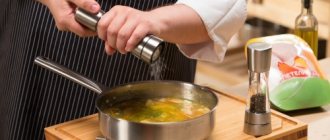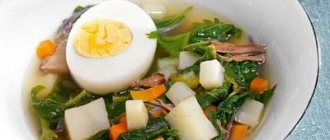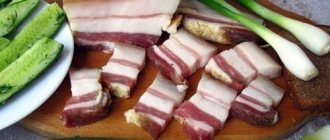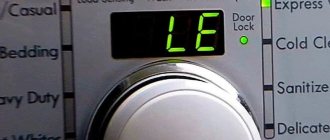Any cook, with much or little cooking experience, can add too much salt to a dish. Pilaf contains a large amount of rice, which absorbs fat, water, as well as salt and spices added to them. Because of this, many people have the problem of adding too much salt. How to fix pilaf if it has been over-salted, will it spoil the taste? Most often, the problem can be solved without losing the classic aroma and traditional taste.
What to do if you over-salted pilaf in a cauldron
If the pilaf in the cauldron is over-salted during the cooking process (between adding spices and rice), then solving the problem is very simple. You need to add a little more rice and do not salt it at all.
If the pilaf is over-salted after adding rice, then the best thing you can do is boil a portion of the cereal separately without adding salt. It is then added to the pilaf and simmered for another 10-15 minutes over low heat to allow the flavors to combine.
Advice! If there is no more room in the cauldron, put part of the pilaf in a separate pan and add clean boiled rice to the remaining pilaf.
The remaining salty part can be used to prepare cabbage rolls, stuffed peppers, or other dishes.
Another interesting way that will help remove excess salt from rice that has just been put in a cauldron is potatoes. Peel several medium-sized root vegetables, drown them in rice, and boil for 5-15 minutes. Then carefully remove with a slotted spoon. Instead of potatoes, you can use a gauze bag with dry rice. Place it in the cauldron while the cereal is stewing, cover with a lid and cook for 20-25 minutes. First, the gauze bag needs to be submerged a little in the main rice.
You can remove excess with the help of pomegranate seeds - a traditional method of correcting the salinity of a dish in Uzbekistan. Place fresh grains in a 2-4 cm layer into a cauldron, directly onto the rice, and leave for 20-30 minutes. Then, together with the pomegranate, they are laid out on plates. In addition to the fact that this method eliminates salt, it corrects the fat content of the dish. Instead of fresh grains, you can use natural pomegranate juice without sugar or syrup.
How not to oversalt - tips and tricks
- It's always easier to prevent overly salty foods than to correct them. Avoid adding too much salt, it is better to reduce the amount during cooking and add it during meals, adjusting the dish to your taste.
- Never salt or add spices directly over the container you are cooking in, this will protect you from unnecessary spillage into your food. It is better to mix all the necessary ingredients in another container and only then add it.
- Always salt food at the end of cooking and let the ingredients salt while simmering, leaving the dish with the heat off for 20-25 minutes.
- Check the salt shaker lid before each food preparation process.
What to do if you over-salted pilaf in a frying pan
If there is too much salt in pilaf cooked in a frying pan, you should cook some rice and vegetables separately, add to the dish and fry. Instead of boiling, some cooks prefer to fry vegetables in a separate frying pan.
Advice! Barberry is a universal spice that will remove excess salt from pilaf, regardless of the method of its preparation. Just add more dried berries at the rice or zirvak stewing stage.
Another extreme way to eliminate the error is to rinse part of the dish. You can carefully remove some of the rice with a slotted spoon, rinse in cold water, and add back. If the dish has already been mixed in a frying pan, then it is even easier to save it using the same method. Just simmer for another 15-20 minutes after rinsing.
How to fix foods that are too salty, sour, spicy or sweet
During the holidays, chefs are almost always in a hurry, and haste means mistakes—everyone makes them, even professionals. But what the pros have in their pocket is an arsenal of cookware repair know-how that can help MacGyver handle almost any situation. I believe knowledge should be shared, and here are my top tips for correcting common seasoning mistakes for foods that are too salty, sour, spicy, flat, or sweet.
If your food... It is too salty
“Salt to taste” runs the gamut, but if something is definitely too salty, how do you get it back? Supposedly, boiling whole potatoes in an overly salty broth will absorb some, but research shows that it is a myth that potatoes absorb all the flavors, not just the salt.
Trending stories, celebrity news and the best of TODAY.
First of all, adding starches such as rice or noodles to the soup, or pureed rice as a thickener in a stew will help balance out the salt. Lemon or vinegar and a little sweetener will also mask the saltiness. But ultimately the main solution is dilution; you need to drain some and start adding liquid and ingredients to make up for it. Most other seasoning fixes come down to the same principle: dilute and distract opposing flavors.
Nathan R. Congleton / TODAY
If your food. . . too sour or sour
Have you ever made a salad dressing or tomato sauce that made your mouth pucker a little? Add a pinch of sugar and a little salt for a quick fix.
If your food. . . too flat
Try squeezing a little lemon or adding a teaspoon of vinegar and watch how your soup, stew or sauce brightens things up like the sun on a rainy day. A dash of white vinegar is the key ingredient in celebrity chef Eric Ripert's hearty one-pot beef goulash recipe.
Grace Parisi / TODAY
If your food. . . too spicy
You have a few options: Acid helps, like a squeeze of lime. So do sweets like chutney. Better yet, add some fat like avocado and dairy like sour cream, avocado, mayonnaise or yogurt.
Nathan R. Congleton / TODAY
If your food. . . too sweet
Whatever you do, don't add salt because it will enhance the sweetness even more. Here, acidity, bitterness and heat neutralize excessive sweetness and add layers of flavor.
.
What to do if you over-salted pilaf in a slow cooker
If the housewife has over-salted the pilaf in the slow cooker - women most often cook the dish in this miracle of technology - then the situation can be corrected using all the methods that are used for a cauldron. Separately, you can cook a small amount of rice, and then add it to the bowl and stir, simmer for another 10-15 minutes in the “Pilaf” or “Stew” mode.
A popular way to eliminate the error is to add pomegranate seeds to the top of the multicooker bowl. The non-standard taste is easily masked by oversalting. If the dish is not intended for a festive table, then the matter is even simpler. Try adding herbs or, for example, an Italian herbs mixture. Another unusual method that can also be used to eliminate over-salting in a saucepan, cauldron or frying pan is adding raisins. You can use any variety: golden, white, black. At the same time, light dried grapes remove excess salt better than others. You need to add dried fruits during the process, when there are at least 20 minutes left until the end of cooking. There is no need to pre-soak them - they will steam in the rice themselves.
After cooling
If you notice that the soup is very fatty, you can immediately do nothing at all. In this case, the refrigerator saves the situation. If such an incident happens in winter, it is better to take the pan out to the balcony and leave it in the cold until it cools completely.
As fat cools, it remains on the surface of the soup, but changes from a liquid state to a denser one. When the soup cools, a thick fatty crust will appear on the surface.
It is easy to assemble with a spoon. I want the soup to be completely low-fat, then you can collect all the fat completely. If desired, part is left. When the borscht or kharcho is heated before consumption, it will become uniform again, but the fat content will not be so critical.
What to do if the finished pilaf is too salty
It is even easier to correct finished over-salted pilaf than at the stewing stage. To do this, you can use additional vegetables, sauces, additives:
- A fresh vegetable salad. Tomatoes, cucumbers and a lot of greens (cilantro, dill or parsley), mixed with olive or sunflower oil, will easily take on some of the salt during consumption.
- Boiled carrots. You can add separately boiled or stewed carrots to the finished dish. It neutralizes some of the salt.
- Braised cabbage. You can turn pilaf into lazy cabbage rolls by rectifying the situation by adding stewed white cabbage.
- Sour cream sauces. If you add unsalted sauce with sour cream, garlic and herbs to an over-salted dish, it will eliminate the excess additive.
- Lemon juice and sour berries. You can squeeze the juice from 1 lemon and add it in portions at the time of serving. The juice of sour cherries, honeysuckle, lingonberries and cranberries is also suitable for this. But currants or strawberries will be too sweet and fragrant.
- Rice and carrots. If the dish is very salty, you can add not only vegetables and grains to it separately, but also together. In this case, it is better to chop the vegetable on a grater, and not to give it the shape of cubes or cubes.
- Onions and carrots. Instead of the rice and carrot combination, you can use a fried onion and root vegetable combination. They should be taken in 500-700 g quantities, depending on the initial amount of pilaf.
- Butter. If there is not too much salt in the dish, then you can add 1 tsp to the plates in portions. melted butter from 72% fat.
- Tomato sauce. Homemade or store-bought tomato sauces without added salt are a great way to eliminate excess. You can choose classic recipes with herbs.
Over-salted pilaf can be saved if you use the methods suggested above.
If there is too much salt and nothing helps, the best way to eliminate the error is to prepare another dish based on the damaged recipe.
So, from a combination of onions, meat, rice and carrots you get delicious cabbage rolls, meatballs in sauce, stuffed zucchini, peppers, and eggplants.
Rules for salting rice, pilaf, calculating the amount of salt
I oversalted the pilaf (all calculations of proportions should be done at the same time, that is, if the amount of salt increases, then the volume of liquid, as well as cereals, should also be increased) - this is what they usually say, based on a person’s individual preferences. To prepare rice correctly, regardless of whether it is one of the main ingredients of a multi-component dish or an independent side dish, it is recommended to adhere to the basic rules for calculating and checking the optimal amount of salt.
They are:
- It is recommended to check the dish for the amount of salt strictly after it has cooled (if you try hot pilaf, it will seem less salty than in reality);
- when preparing rice or dishes containing it, it is necessary to test for salt no more than 2 times during the entire working process (otherwise the taste buds will be dulled, which means it will be impossible to determine the required salt concentration);
- If you need to use salt to add flavor to the finished dish, you should calculate its amount as follows: 1 tbsp. l. for 500 g of cereal and 500 g of meat;
- when using coarse sea salt, the recommended amount of seasoning will need to be reduced by 1.5-2 times (this product is saltier than its analogue, processed into fine crumbs);
- If a cook determines whether there is enough salt by looking at the broth, it is important to keep in mind that the liquid should be slightly salty to taste, since it will “give off” some of the seasoning when cooking the cereal.
Method three
What should you do if you over-salted the pilaf and discovered this fact before the end of cooking? You can save the dish by adding a new portion of vegetables fried in oil (onions, carrots).
However, this option is good if you realize it in time, when the rice is not quite ready, because when mixing all the ingredients, your pilaf simply risks turning into porridge.
Second courses
In order not to oversalt the dish, you need to remember that some ingredients themselves already contain salt, for example, bacon, cheese, fish. Slightly salty food will become very salty after stewing. It is better to lightly salt any dish, and add a little salt towards the end of cooking if necessary.
To remove excess saltiness from main courses, use a combination of seasonings. You can also add something sweet, sour or spicy. The sourness and sweetness balance out the sweetness.
It is believed that it is better to salt an almost finished dish, then the negative effect of salt on the body is neutralized. In practice it can be done like this. For example, salt potatoes when they are already ready, but are still in the water. It will take very little time for her to acquire the desired taste. The soup can also be salted after cooking, when you turn it off and leave it to infuse. Do the same with sauces.
The first remedy that can help remove excess saltiness, if necessary, is greens. You can add a large amount of parsley and dill. Greenery will absorb everything unnecessary. And then you can simply remove it from the dish.
Add water
Regular drinking water will help save the dish in most cases. To do this, do the following:
- pour the food into a clean, dry pan, put it on the fire to heat up;
- when the food becomes hot, add 3-4 tbsp. water, wait until it boils and taste it. If you feel salt, add more water, but not more than one glass.
This method is suitable for liquid dishes: sauces and gravies can be diluted with water in an unlimited amount. Using the same principle, you can “reanimate” spoiled soup, but just remember to bring the liquid to a boil before adding it. If you add water to a cold product, the meat broth is likely to become cloudy and lose some of its flavor.
If you have oversalted vegetables, cereals, pasta, the same water will help correct the situation. Transfer the food to a colander, turn on a little cool water pressure and rinse the contents for a few minutes. Excess salt can be easily removed and water will immediately absorb it. Then wait until all the liquid has drained from the colander, blot the contents with a napkin and taste the product. You may need to salt it a little again.
Do you need an egg in minced meatballs?
Losing belly fat while dieting
You don't have to go on a crash diet to lose a fat belly. Nutrition for losing belly fat should be balanced and gentle. There are rules that must be followed.
A fat loss diet should not contain empty calories. Refuse, at least for a while, fatty foods, fried and smoked foods, and fast food.
You can’t torture yourself with hunger and you need to have snacks. It could be nuts, an apple or orange, low-fat yogurt.
Four hours before bedtime you should stop eating.
Menu:
- Breakfast. You can eat muesli or oatmeal with kefir or dried fruits. 20 g of butter and grain bread are allowed.
- Dinner. Lunch should be light soup, a salad of raw vegetables, and a piece of boiled meat.
- Dinner. Vegetable or fruit salad, a piece of cheese and kefir.
The bulk of food should be consumed in the first half of the day. Light snacks are allowed between meals.
When boiling
When the soup begins to boil intensely, foam forms on the surface. It mixes with fat. As a result, a foamy fatty mass floats to the edges, which has a very unattractive appearance. Any housewife gets rid of it. It's better to do it like this:
- The heat under the pan is reduced to low, so the boil will become weak, removing the foam is safer and easier.
- The pan needs to be moved a little to the side. The fire will only heat part of the bottom, so the foam will stick to one side. It is easy to clean, removing fat at the same time.
- Place the soup back in the center and cook until done.
There are special jugs with spouts through which you can strain broth that is too fatty. And if you don’t have a jug, a gravy boat with a spout will do.
How to save fatty soup:
- The dishes will need to be cooled as much as possible before use.
- Pour the soup (without thick mixture) into a jug.
- Let stand for a few minutes.
- Slowly pour the contents into the pan through the spout. You can do this operation several times.
Fat settles on the walls, which must be removed with a towel after the transfusion is completed.











